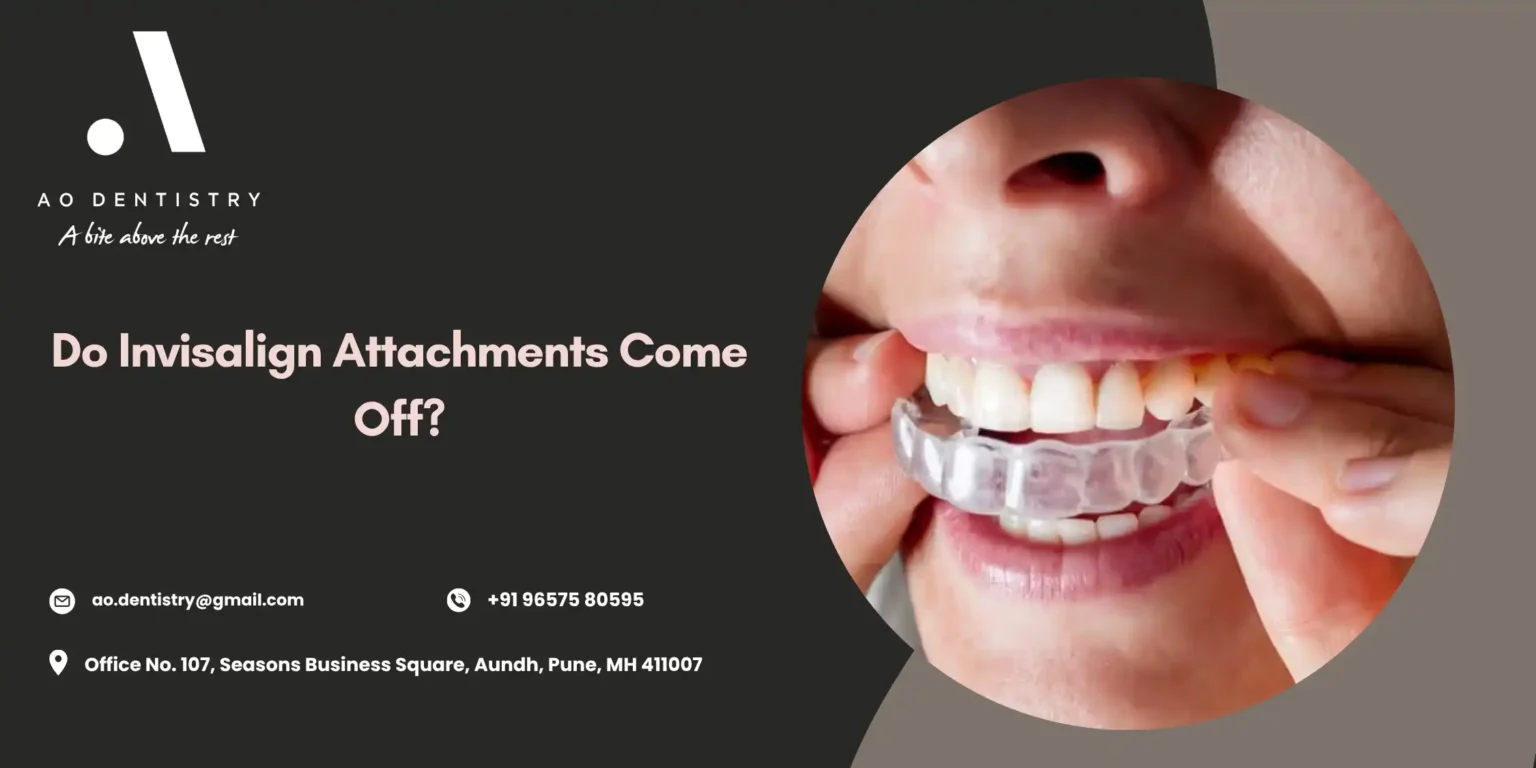You just got Invisalign, and now you’re dealing with these small bumps on your teeth. Your orthodontist called them attachments, but nobody really explained what happens if they fall off. Maybe you’re worried about what if my Invisalign attachments fall off?
Let’s talk about what these attachments actually do, and answer all your questions, like Do Invisalign attachments come off
Do Invisalign attachments come off easily?
When do Invisalign attachments come off, and what you should know to keep your treatment on track.
Want to know what the difference is between aligners and braces?
What Are Invisalign Attachments
Invisalign attachments are small, tooth-colored buttons that your orthodontist bonds directly to certain teeth. It is made from composite resin, the same material used for tooth-colored fillings. The strong bonding material means patients shouldn’t worry about do invisalign attachments come off easily with normal use.
Each one gets placed in a specific spot because it has a job to do. Some are square, others look like little triangles or rounded dots, and there’s a reason for every shape.
Why are they necessary? Well, clear aligners alone sometimes struggle to grip smooth tooth surfaces effectively. Attachments solve this problem by giving aligners something to push against.
Different attachment shapes accomplish different things:
- Square or rectangular shapes help teeth rotate
- Triangular attachments assist with pulling teeth outward
- Beveled ones help tip teeth into position
- Rounded attachments work for vertical movements
The placement isn’t random either. 3D Intraoral scanner maps out exactly where each attachment goes based on how your teeth need to move.
Click here to learn more about Types of Crowns for Teeth
Why Do Invisalign Attachments Fall Off?
Now lets understand do Invisalign attachments come off? Or do Invisalign attachments come off easily or when do invisalign attachments come off
Even though they’re meant to last your whole treatment, attachments sometimes give up early. Usually, you can trace it back to one of these issues.
What you eat matters:
Hard foods are the obvious problem, ice, nuts,and hard candies. But plenty of normal foods cause trouble, too. That satisfying crunch when you bite into an apple? That’s enough force to knock an attachment loose. Sticky foods also create different problems.
Wrong Way of Removing attachments
Lots of patients pull their attachments out, starting from the front teeth. This puts maximum stress right on the most visible attachments. The plastic stretches and pulls until either the attachment cracks or an attachment pops off.
Normal Wear and Tear
Attachment material breaks down slowly from constant exposure to saliva, hot and cold drinks, and regular chewing forces. Even perfect patients lose attachments sometimes because the bond naturally weakens over months of use.
Grinding and Clenching
Night grinding creates enormous forces that overwhelm attachment bonds. Even daytime jaw clenching from stress can gradually loosen attachments that seemed perfectly secure.
Poor Cleaning Habits
Plaque buildup around attachments creates acid that slowly dissolves the bond. This weakening happens gradually until normal forces become enough to pop the attachment loose.
Understanding these causes helps answer the question do invisalign attachments come off easily?
Click here to read How to use mouthwash?
How to stop tooth decay from spreading? Read this article
What Happens If an Invisalign Attachment Falls Off?
First thing you’ll notice – your aligner feels different around that tooth. Usually looser, sometimes it doesn’t snap into place quite right anymore. The tooth that lost its attachment stops getting the precise pressure it needs for proper movement.
This doesn’t mean your teeth will immediately shift back where they started. Tooth movement takes time in both directions. But that particular tooth might stall out or even drift slightly off course if the attachment stays missing too long.
Your orthodontist needs to replace lost attachments fairly quickly to keep treatment on track. Waiting too long might mean:
- Slower tooth movement overall
- Need for extra aligners to get back on course
- Extended treatment time
- Less predictable final results
The replacement process is straightforward. Your orthodontist cleans the tooth surface, applies fresh bonding material, shapes the new attachment, and cures it with a special light. Takes maybe five minutes per attachment.
Want to know if RCT is painful? Read here
How to Stop Grinding Teeth in Sleep Naturally, Read here
How to Prevent Invisalign Attachments From Coming Loose
Keeping Invisalign in place requires changing some habits and being more disciplined about certain activities
Better Aligner Removal
Start removing your aligner from your back teeth and go forward toward the front. Use fingertips and not nails, also don’t rush. Being gentle and steady works better than quick motions
Smarter Food Choices
Some foods create too much risk for attachments:
- Hard candy and ice cubes
- Nuts in the shell
- Sticky caramel or gum
- Crunchy chips and pretzels
- Crusty bread that requires tearing
Upgraded Oral Care
Clean around attachments carefully but thoroughly. Soft toothbrushes bring the best results since hard bristles can slowly wear off the bond. Electric toothbrushes are fine if you use gentle pressure.
Address Grinding Issues
Talk to your orthodontist about night guards if you have a habit of grinding your teeth. The guard absorbs grinding forces that would otherwise stress attachments beyond their capacity.
Keep Regular Appointments
Your orthodontist can spot attachments starting to loosen before they actually fall off. Catching problems early prevent you from bigger issues later.
Want to know the causes of yellow teeth
How to stop tooth decay from spreading? Read this article
Can Invisalign Work Without Attachments?
Some cases work fine without any attachments. Minor spacing issues or slight crowding might not need these extra grips. But most comprehensive treatments depend on attachments for success.
Moving teeth in complex ways requires the extra leverage that attachments provide. Rotating crooked teeth, closing big gaps, or fixing bite problems becomes nearly impossible with smooth aligners alone.
Skipping necessary attachments usually means:
- Much slower progress
- Less precise movements
- Need for more aligner sets
- Higher chance of refinements
Modern Invisalign treatment planning assumes you’ll have the recommended attachments. Treatment predictions become less reliable when attachments are missing or avoided.
Here are a few home remedies for swollen gums
FAQs
Q1. Will my Invisalign attachments fall off?
Ans. About one in seven patients loses at least one attachment during treatment. Good care reduces the odds significantly.
Q2. Do Invisalign attachments stay on the entire time?
Ans. Most attachments remain bonded until your orthodontist removes them at the end of treatment using special instruments.
Q3. Does removing Invisalign attachments damage teeth?
Ans. Professional removal doesn’t hurt your teeth. The composite material polishes off cleanly without affecting enamel.
Q4. Can I fix a loose Invisalign attachment at home?
Ans. Never ever try home repairs. Only dental offices have the right materials and equipment for reliable attachment bonding.
Q5. Can Invisalign work without attachments?
Ans. Simple cases sometimes work without attachments, but most patients need them for efficient, predictable results.


